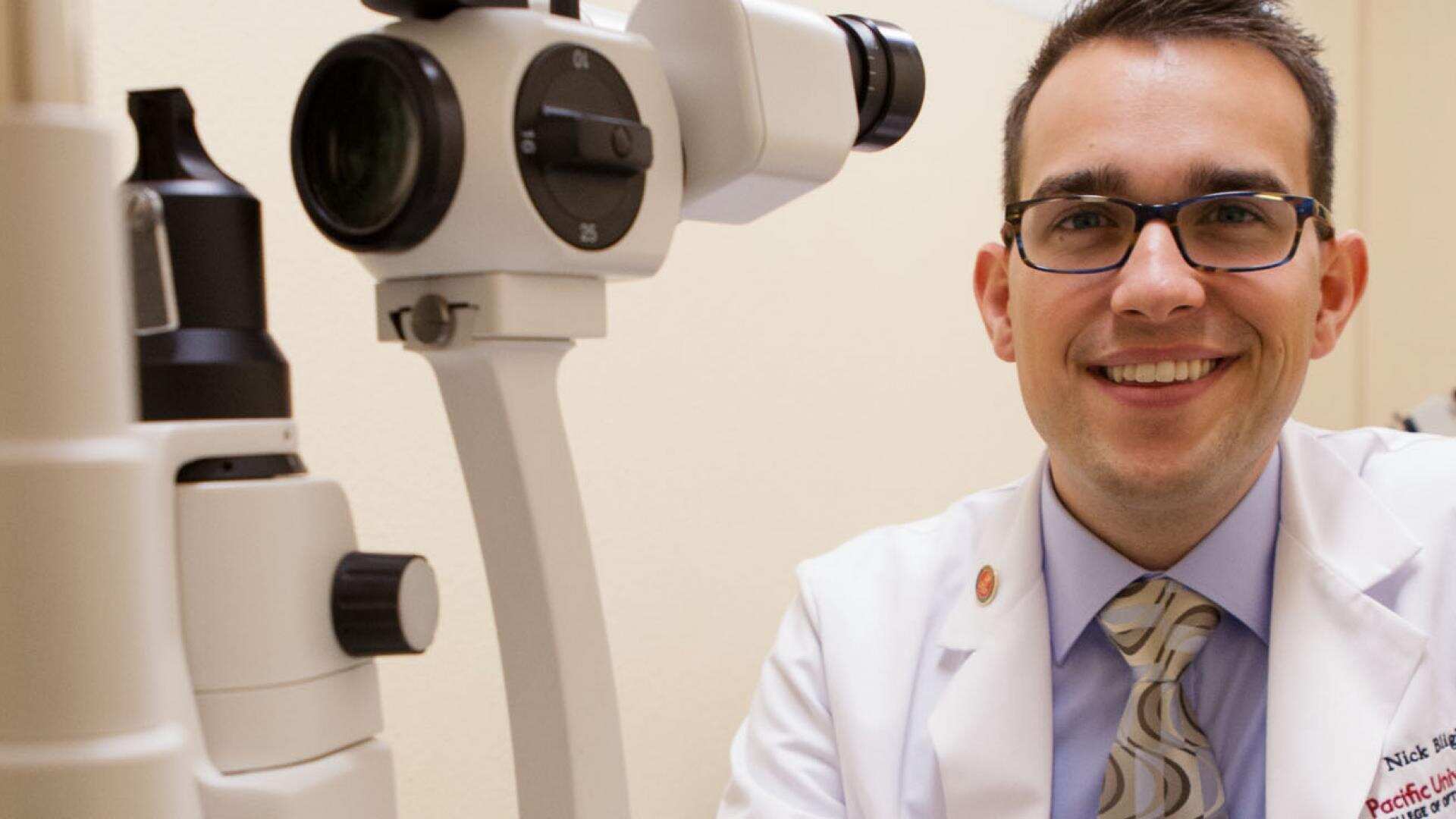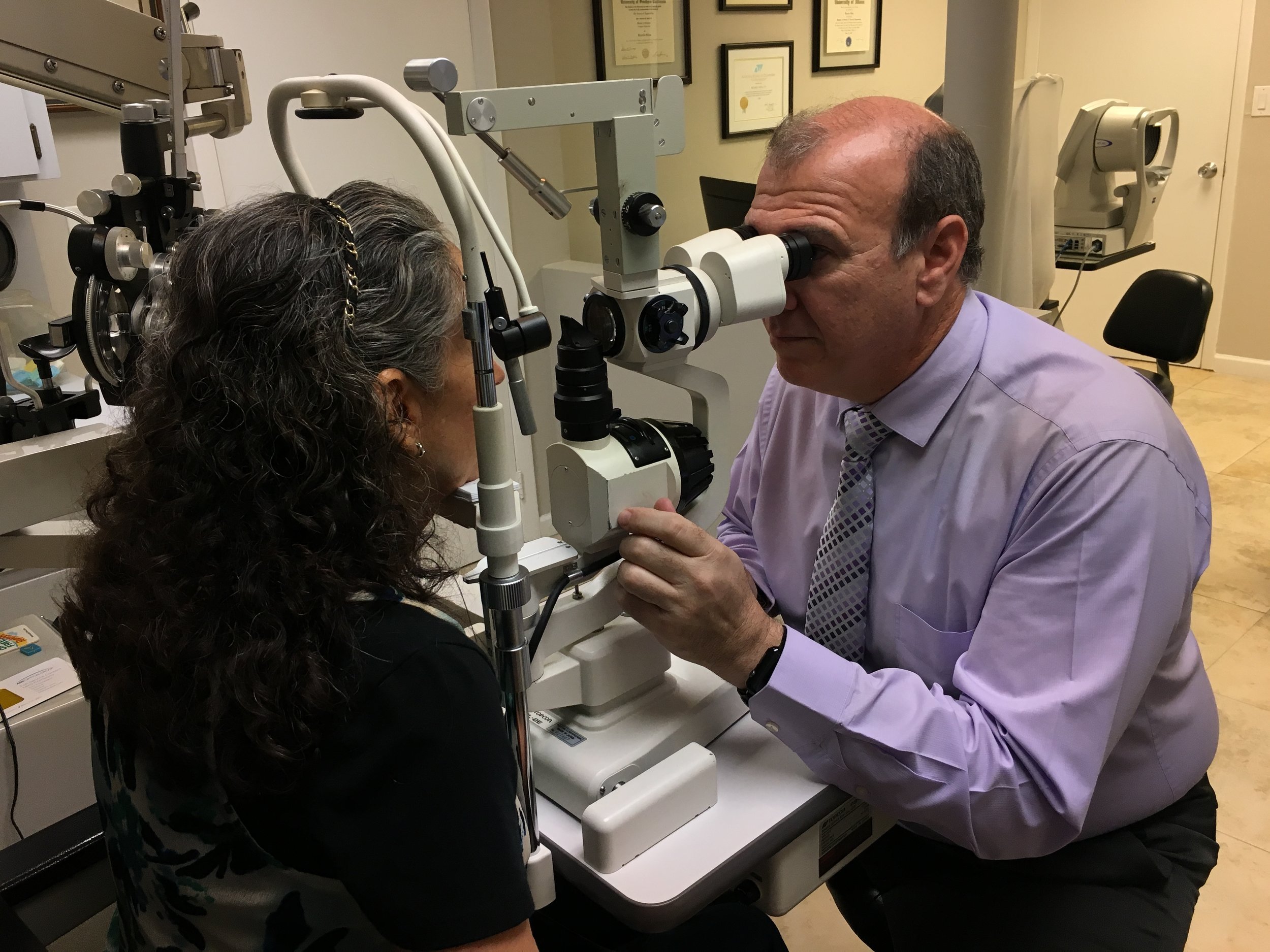Checking Out the most up to date Technical Improvements in Optometry and What They Mean for Eye Doctors
In the ever-evolving field of optometry, current technological innovations are reshaping how experts approach eye treatment. From the accuracy of Optical Coherence Tomography to the nuanced insights supplied by AI-driven analysis devices, these advancements are setting brand-new requirements in individual evaluation and therapy. Teleoptometry is poised to redefine access, making certain that knowledge transcends geographical constraints. As these innovations permeate the method, optometrists are encountered with the challenge of welcoming these tools to improve client outcomes. The question stays: exactly how will these technological changes redefine the duties and duties within the profession?
Developments in Diagnostic Devices
Advancing the field of optometry, developments in diagnostic tools have reinvented the way eye treatment experts evaluate and diagnose visual disabilities and eye problems. The previous years has seen considerable technological innovations, enabling more accurate and thorough assessments. Optical Coherence Tomography (OCT), for instance, offers high-resolution cross-sectional pictures of the retina, permitting the early detection of diseases such as glaucoma and age-related macular degeneration. This non-invasive imaging technique has become essential in contemporary optometric technique.
An additional secret innovation is the intro of advanced corneal topography systems, which map the surface curvature of the cornea with accuracy. These tools are specifically useful for suitable contact lenses and identifying corneal problems. Digital retinal imaging has actually changed typical ophthalmoscopy, using thorough, breathtaking views of the retina that help with extensive aesthetic exams.
The development of wavefront aberrometry has also been important, allowing the evaluation of refractive mistakes with unparalleled accuracy (Eye Doctor). This innovation helps in personalizing rehabilitative lenses and enhancing surgical end results for refractive surgeries. Collectively, these diagnostic improvements equip eye doctors to supply superior client treatment, making sure very early intervention and tailored therapy approaches, ultimately boosting aesthetic wellness outcomes
AI in Patient Management
Structure on the structure of sophisticated analysis tools, the incorporation of expert system (AI) in person administration represents a transformative leap for optometry. AI systems are significantly utilized to enhance efficiency, precision, and personalization in client treatment. By assessing substantial amounts of data, AI can recognize patterns and anticipate prospective ocular problems, making it possible for eye doctors to tailor interventions more efficiently. This ability is vital in taking care of persistent eye illness such as glaucoma and diabetic retinopathy, where very early discovery and continuous monitoring are key.
Moreover, AI-driven systems help with structured patient interactions and management processes. Automated organizing, virtual examinations, and personalized follow-up plans not just improve individual complete satisfaction but likewise maximize time management for professionals. These systems can triage clients based upon the urgency of their conditions, making sure that those in crucial demand receive timely interest.
In addition, AI enhances decision-making by offering optometrists with evidence-based referrals and therapy pathways. By integrating data from electronic health and wellness records, AI tools use understandings that inform scientific choices, decreasing the danger of errors and improving individual outcomes. As AI continues to advance, its duty in client administration will likely expand, improving the landscape of optometric care.
Breakthroughs in Retinal Imaging
In the world of optometry, retinal imaging has actually experienced exceptional technological developments that are enhancing analysis abilities and patient treatment. Advancements such as Optical Coherence Tomography visit their website (OCT) and fundus photography have actually changed exactly how optometrists examine the retina and picture.
Enhanced imaging techniques like OCT angiography are more refining diagnostic accuracy. Eye Doctor. Such innovations assist in the recognition of minute retinal changes that might signify illness development.
Additionally, advancements in expert system are augmenting retinal imaging by allowing computerized evaluation of large datasets. These systems assist eye doctors in recognizing patterns indicative of pathology, thus boosting analysis accuracy and efficiency. Collectively, these advancements are changing retinal imaging right into a cornerstone of modern eye care, enhancing end results and expanding restorative opportunities.
Teleoptometry's Growing Function
Teleoptometry is significantly becoming a vital component of eye treatment, driven by developments in electronic interaction and analysis tools. As optometry accepts electronic improvement, teleoptometry assists in remote examinations, allowing optometrists to expand their services past traditional boundaries. This is especially advantageous in underserved and country areas where access to specialized eye care is frequently restricted. By leveraging high-resolution video clip conferencing and advanced retinal imaging, eye doctors can perform extensive eye tests from afar, making sure timely diagnosis and therapy.
The assimilation of expert system (AI) further enhances teleoptometry, allowing the evaluation of visual data and helping in the detection of eye problems such as glaucoma and diabetic person retinopathy. AI-powered formulas can swiftly interpret complicated imaging information, supplying optometrists with beneficial understandings that strengthen clinical decision-making.
Moreover, additional resources teleoptometry supports continuity of care via seamless integration with digital health documents (EHRs), enabling optometrists to keep extensive patient backgrounds. When consulting with various specialists., this guarantees that patients receive consistent and customized treatment even.
Despite these benefits, obstacles remain, including making sure information protection and taking care of person assumptions. Teleoptometry stands for a substantial stride towards even more easily accessible, efficient, and patient-centered eye treatment. As technology advances, its role is positioned to expand better.

Future Patterns in Eye Treatment
A myriad of cutting-edge trends is readied to improve the future of eye treatment, driven by technical developments and the evolving requirements of individuals. One significant trend is the combination of synthetic knowledge (AI) in diagnostics, which assures to boost the accuracy and performance of eye assessments. AI algorithms can analyze substantial amounts of information from retinal pictures, possibly identifying problems like diabetic person retinopathy and glaucoma earlier than standard techniques.
Furthermore, individualized medicine is gaining traction in optometry, with genetic testing educating tailored therapy plans. This technique intends to maximize individual results by tailoring interventions to specific hereditary profiles. Wearable technology, such as smart get in touch with lenses, is likewise coming up, providing real-time tracking of intraocular pressure or sugar levels, hence giving continuous insights into eye and systemic health.
The adoption of augmented fact (AR) and digital truth (VR) in training and person education and learning is an additional arising pattern. These modern technologies offer immersive experiences that can improve understanding and abilities both for optometrists and individuals. As these fads evolve, eye doctors have to stay abreast of technical innovations to offer sophisticated care, ensuring better person end results and complete satisfaction in the vibrant landscape of eye treatment.
Verdict

Collectively, these analysis developments empower eye doctors to supply superior client treatment, making sure very early intervention and customized therapy strategies, ultimately boosting visual health and wellness end results.

As these innovations proceed to develop, eye doctors should adjust and include them right into practice, inevitably enhancing workflow effectiveness and raising the requirement of eye care supplied to individuals.